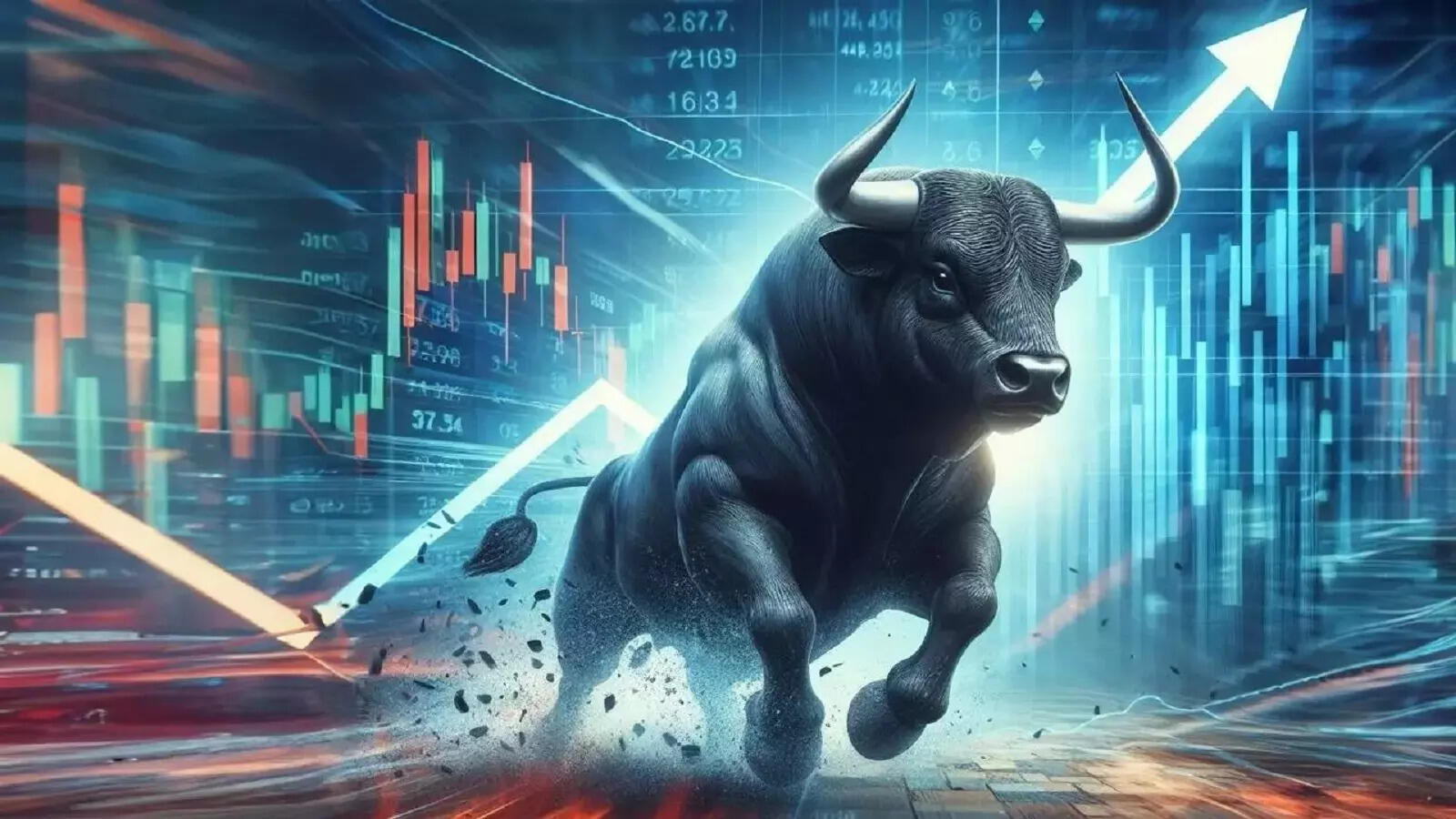Indian stock markets witnessed a significant surge last week, with the top ten most valued companies collectively adding over Rs 1.55 lakh crore to their market capitalization. Reliance Industries and TCS led the gains, reflecting robust investor confidence. The BSE Sensex also climbed, hitting a new 52-week high. Despite some individual stock declines, the overall market sentiment remained positive.
Riding the Bull: Indian Market Giants See Massive Gains
The Indian stock market is humming, and the tune is a sweet one for investors in some of the country’s biggest companies. Last week saw a significant surge in market capitalization (mcap) for seven of the most valued firms on the exchanges, adding a whopping ₹1.55 lakh crore to their collective worth. Leading the charge were familiar names like Reliance Industries and Tata Consultancy Services (TCS), painting a vibrant picture of growth and investor confidence.
This injection of value reflects more than just fleeting market optimism; it signifies underlying strength and potentially long-term positive trends within these companies and the broader Indian economy. But what exactly fueled this impressive leap, and what does it mean for the average investor?
Reliance and TCS Steal the Show: Understanding the Surge
Reliance Industries, a behemoth in sectors ranging from energy to telecommunications, spearheaded the gains. The company’s diversified portfolio offers resilience, making it a popular choice for investors seeking stability and growth potential. Its continued expansion into new markets and innovative strategies likely contributed to the positive sentiment. Similarly, TCS, a global IT services giant, benefitted from the increasing demand for digital solutions and its reputation for delivering cutting-edge technology. Their solid financial performance and consistent dividend payouts likely attracted both domestic and foreign investors.

But Reliance and TCS weren’t alone in this rally. Hindustan Unilever Ltd (HUL), Infosys, HDFC Bank, ICICI Bank, and State Bank of India (SBI) also witnessed increases in their market capitalization. HUL, a consumer staples giant, benefited from resilient demand for its products, while the banking sector, represented by HDFC Bank, ICICI Bank, and SBI, was buoyed by positive economic indicators and strong loan growth. Infosys, another IT heavyweight, mirrors TCS’s fortunes in the digital transformation wave.
Decoding Market Capitalization and Why It Matters
Market capitalization, or mcap, essentially represents the total value of a company’s outstanding shares. It’s calculated by multiplying the current share price by the total number of shares in circulation. A rise in mcap indicates that investors are willing to pay more for each share, reflecting a positive outlook on the company’s future prospects.
For investors, market capitalization is a crucial metric. It helps assess the size and stability of a company, influencing investment decisions and portfolio allocation. Companies with higher market capitalization are generally considered more stable and less volatile, making them attractive to risk-averse investors. However, they might also offer less explosive growth potential compared to smaller, emerging companies. Remember to always diversify your investment portfolio.
Navigating the Market: Is This a Sign of Things to Come?
While the recent surge in market capitalization is undoubtedly encouraging, it’s important to approach the market with a balanced perspective. Stock market performance is influenced by various factors, including global economic trends, geopolitical events, and company-specific news. While this positive trend suggests a healthy appetite for Indian equities, external factors could always trigger volatility.
For example, changes in interest rates, inflation figures, or unexpected regulatory announcements can all impact investor sentiment and subsequently affect market capitalization. It is also important to The substantial increase in market capitalization of these seven major Indian firms signals a potentially positive trend in the Indian stock market. Whether this bullish momentum continues remains to be seen, as markets are inherently dynamic. The underlying strengths of these companies, coupled with favorable economic conditions, suggest a promising outlook. As always, vigilance and informed decision-making are key to navigating the complexities of the market and maximizing long-term investment success. This surge reinforces the importance of India’s leading companies in driving market growth and creating value for investors.







